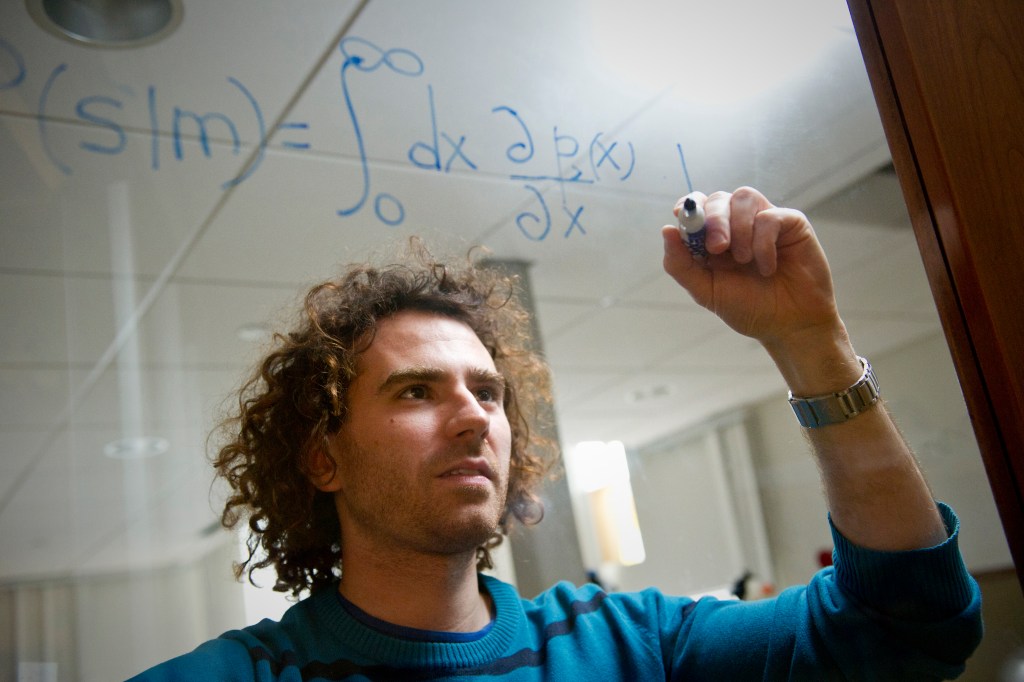You scratch my back and I’ll scratch yours

Suppose you held in your hands a bunch of individuals from different species, sort of like a miniature Jumanji set. You have some cows, some bacteria, some plants, some bugs, and a whole bunch of other living things. You throw the lot up in the air and let them land where they will, randomly positioning themselves next to one another.
Like a social network, links between the individuals will form based simply on who’s nearby. One cow takes a bite of grass; another cow eats a bug. A bacterium sets up shop on a bug’s back, so now it’s in a cow’s stomach, and so on. Not all of these interactions will be the most ideal for a species’ survival. But a few, called mutualistic interactions, will be great for everyone involved.
“Species select their mutualistic partners to maximize their population,” said Filippo Simini, a postdoctoral research associate in Northeastern’s Center for Complex Network Research. While on its own this fact isn’t all that surprising, its implications have puzzled ecologists and network scientists like Simini for some time.
Here’s the conundrum: As random networks become progressively more organized, with less favorable interactions being cast aside for more favorable ones, the community becomes less resilient while simultaneously becoming more stable. That’s because the network topology that emerges from this kind of optimization is less capable of bouncing back after small perturbations, like disease or a storm or short drought.
So why does it happen at all?
In a paper recently released in the journal Nature, Simini and his colleagues Samir Suweis and Amos Maritan of the University of Padova and Jayanth Banavar of the University of Maryland present a so-called “variational principle” to explain the unexpected, though commonly observed, topology of mutualistic networks.
Called “nestedness,” this type of architecture looks like a set of Russian Matryoshka dolls. The smallest doll comprises the most specialized species—for instance, the bacteria that can only survive inside a cow’s stomach, where it pays rent by keep the cow’s gut clean and healthy. The rest of the network, the outermost dolls, are made up of the links between more generalist species—the cows, the grass, and the bugs that can interact with each other plus a host of other species in the ecosystem.
By analyzing theoretical mutualistic networks via computational modeling, the researchers were able to show that communities with strong mutualistic interactions tended to be less nested, and thus more resilient. “When interaction strengths are weak, it becomes crucial for the community to organize into a highly nested architecture in order to maximize its population,” said first author Suweis.
In mutually beneficial interactions, everyone wins. So, if a process maximizes one species’ abundance, the community’s total population will increase and thus tend further toward this nested architecture.
The system becomes more stable overall, but in the face of distress, it will take more time to return to normal. The system’s resilience, according to the team’s findings, is ultimately determined by the population of the rarest species: “The lower the population of the rarest species,” said Simini, “the longer the time to recovery.”
It turns out mutualistic networks don’t just show up in the natural world. Other examples include creditors and debtors, academic collaborations, and even manufacturing networks. Regardless of their setting, be it a marine ecosystem or a financial boardroom, mutualistic networks will tend toward nestedness and Simini’s work could go a long way toward explaining that phenomenon and its implications in a variety of settings.





